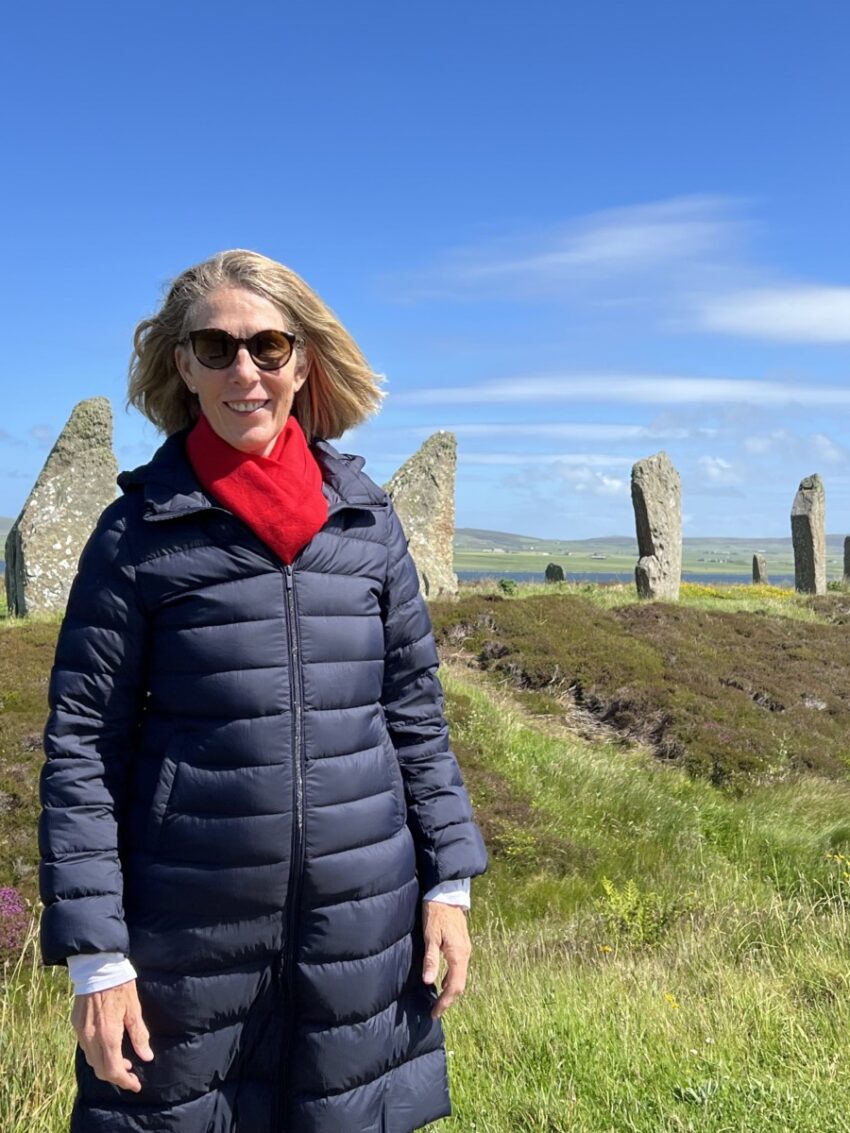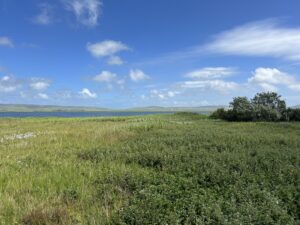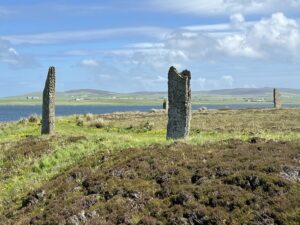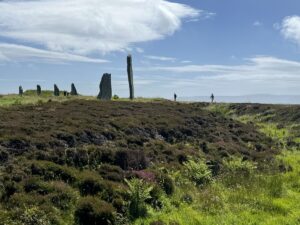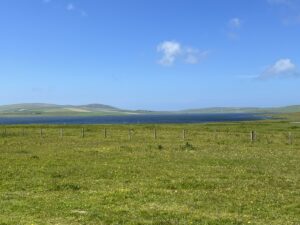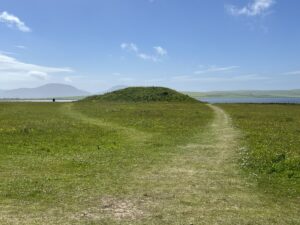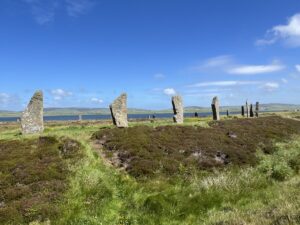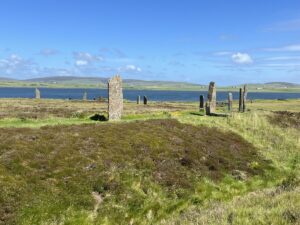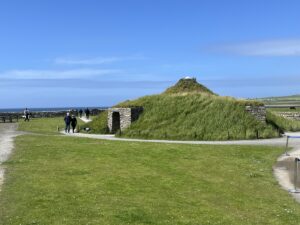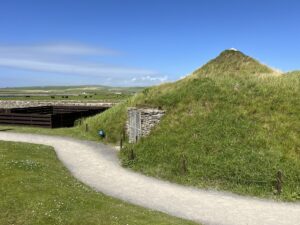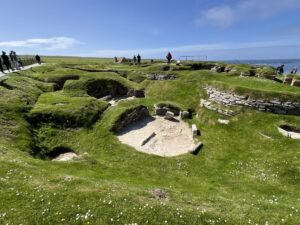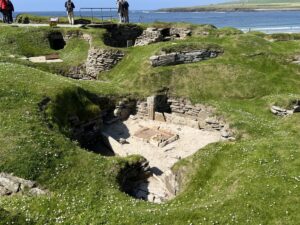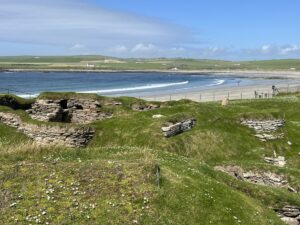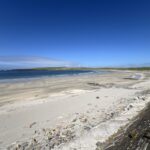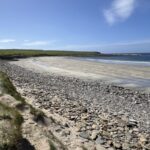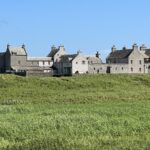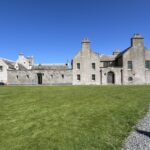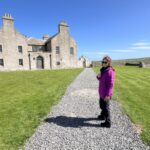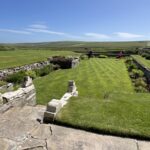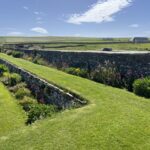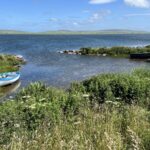Hi! I’m back as promised. Unfortunately the wifi on board our beautiful ship was very unreliable and it was impossible to download photos and keep up to date with my blog, so here I go.
We departed Southampton on the 21st June and had one day at sea before arriving at Kirkwall, which is nestled on the largest island of the Orkney archipelago. We ventured into the historical heartland of Orkney and visited pre-historic landmarks and Scapa Flow, a body of water in the Orkney Islands, sheltered by the islands of Mainland, Graemsay, Burray, South Ronaldsay and Hoy. Its sheltered waters have played an important role in travel, trade and conflict throughout the centuries.
We set off from Kirkwall across Mainland island and passed through a gently rolling landscape and into the UNESCO-designated Heart of Neolithic Orkney-a World Heritage site recognized for its ancient archaeological wealth.
First we passed the Standing Stones of Stenness, four tall Neolithic slabs with sharply angled tops. Then on to the Ring of Brodgar. This is a huge ceremonial circle of standing stones somehow raised in place 5,000 years ago.
The Ring of Brodgar comprises:
A massive stone circle, originally consisting of 60 stones – 36 survive today
At least 13 prehistoric burial mounds
A large rock-cut ditch surrounding the stone circle
It is also home to a rich diversity of wildlife such as skylarks, Orkney voles and oystercatchers and the land around the Ring of Brodgar harbours many important species of wild flowers, insects and birds.
The Ring of Brodgar’s prominent location, in a natural amphitheatre surrounded by hills and water, suggests that it was used as a meeting place for public ceremonies.
After our walk around the mysterious Ring of Brodgar we headed on to Skara Brae, a Neolithic village of clustered dwellings dating to about the same era as the Ring of Brodgar. Buried for millennia, they were only revealed from under the sand dunes by a chance storm in 1850.
Nearby is Skaill House, a 1620 manor built on top of an ancient Pre-Norse burial ground. Overlooking the spectacular Bay of Skaill, the house was originally built in 1620 by Bishop Graham and has been added to by successive Lairds over the centuries. The house was opened to the public in 1997 after careful restoration work, and is very much the family home as it was in the 1950s. Captain Cook’s dinner service, Neolithic and Iron Age finds, Stanley Cursiter paintings, the Bishop’s original bed, and many other items of interest collected by the twelve Lairds of Skaill can be seen around the house.
We then followed the coast of Scapa Flow, one of the world’s best known stretches of sheltered water. This is where the German naval fleet scuttled itself soon at World War 1’s end. WW11 saw calamitous action here too!
Such lovely mystic countryside. A great stop on our cruise.

